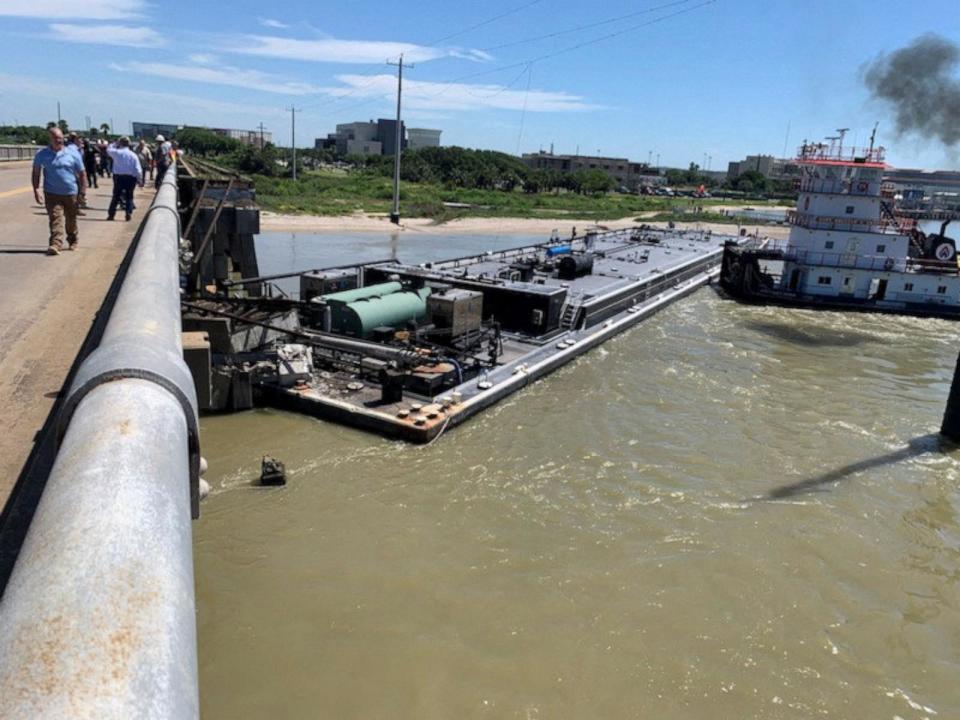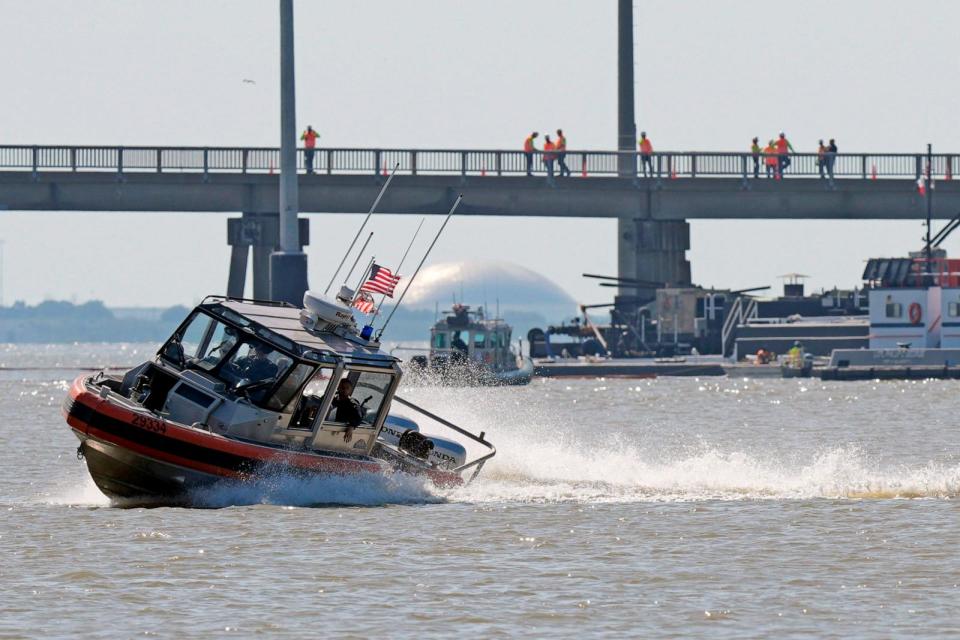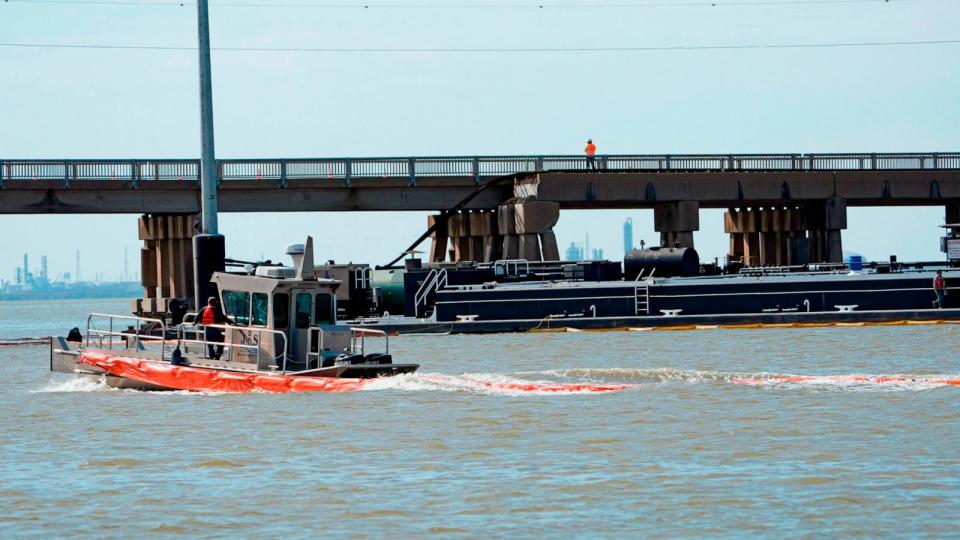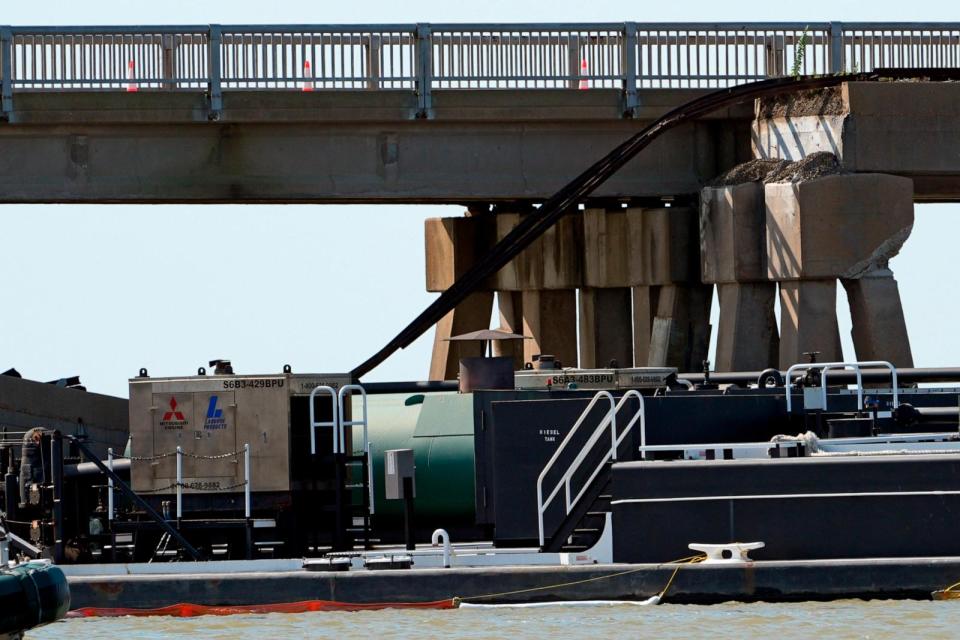Source of oil leak into Galveston Bay following barge collision has been contained, say officials
Officials are monitoring an oil spill in Texas waterways after the partial collapse of a bridge that was struck by a barge, but the source of the spill itself has been contained, according to the U.S. Coast Guard.
The 321-foot barge, named MMLP 321, struck a pillar on the railroad portion of the Pelican Island Causeway on Wednesday morning, causing oil aboard the vessel to leak into Galveston Bay, according to officials. The span is the only bridge that leads from the island city of Galveston, on the Texas Gulf Coast, to nearby Pelican Island.
Engineers from the Texas Department of Transportation will inspect the roadway and determine if it also is damaged, officials said. No injuries were reported.
The barge was carrying 30,000 barrels of vacuum gas oil, the U.S. Coast Guard said in a statement on Wednesday. It is unclear how much oil leaked into the bay.
The U.S. Coast Guard is leading the response to assess the oil spill and will determine its extent and the cleanup process. The source of the leak from the barge has been contained, the Coast Guard said in a statement on Thursday.

Sheen from the oil on the water could be seen in aerial footage of the bay.
A Coast Guard plane as well as drones were deployed Thursday morning to evaluate the extent of the oil spill, the Coast Guard said. The Coast Guard also closed 6.5 miles along the Gulf Intracoastal Waterway, a busy shipping channel for the region.
"The harmful consequences of oil are once again impacting our coastal communities, wildlife, and waters," Joseph Gordon, campaign director for Oceana, an ocean conservation nonprofit, said in a statement regarding the spill. "...Whether it's spills at platforms like the Deepwater Horizon disaster, or spills due to accidents during transport, oil and gas drilling plays a destructive role in fueling the climate crisis."

MORE: Coastal US cities are sinking as sea levels continue to rise, new research shows
The spill will probably have minimal long-term consequences, considering the volume of oil on board the barge, Danny Reible, a professor of environmental engineering at Texas Tech University, told ABC News.
"This volume would be widely dispersed pretty quickly," Reible said, adding that cleanup crews will likely deploy efforts like booms and collectors to mitigate the spread of the leak.
The Texas General Land Office, the state on-scene coordinator for the accident, is collaborating with other federal, state and local officials to ensure the safety of the public and responders, General Land Office Commissioner Dawn Buckingham told ABC News in an emailed statement.
"Other than safety, our top priorities include controlling the source of the pollution, containing and removing the spilled product from the water, re-establishing commerce, and protecting the Natural Resources of Texas," the statement said.

Pelican Island is home to a large shipyard, as well as industrial facilities and Texas A&M University's Galveston campus. While commencement ceremonies were held last week and classes are done for the spring semester, more than 200 people remained on the island and needed to be evacuated, ABC Houston station KTRK reported.
MORE: Map: Where ongoing water crises are happening in the US right now
First responders facilitated evacuations by allowing drivers to pass over the bridge one by one, at about 20 feet apart. Evacuations were temporarily halted while officials inspected the stability of the bridge. Hours later, the bridge was reopened for drivers leaving Pelican Island, but no one was permitted to enter, according to KTRK.
Texas A&M students, faculty and non-essential personnel were relocated from the island as of 10:30 p.m. Wednesday.

The bridge remains open to cars leaving Pelican Island and to pedestrians both ways, officials said.
On March 26, six people were killed after a cargo ship struck the Francis Scott Key Bridge spanning Baltimore Harbor, causing that bridge to collapse.
ABC News' Jennifer Watts contributed to this report.
Source of oil leak into Galveston Bay following barge collision has been contained, say officials originally appeared on abcnews.go.com

